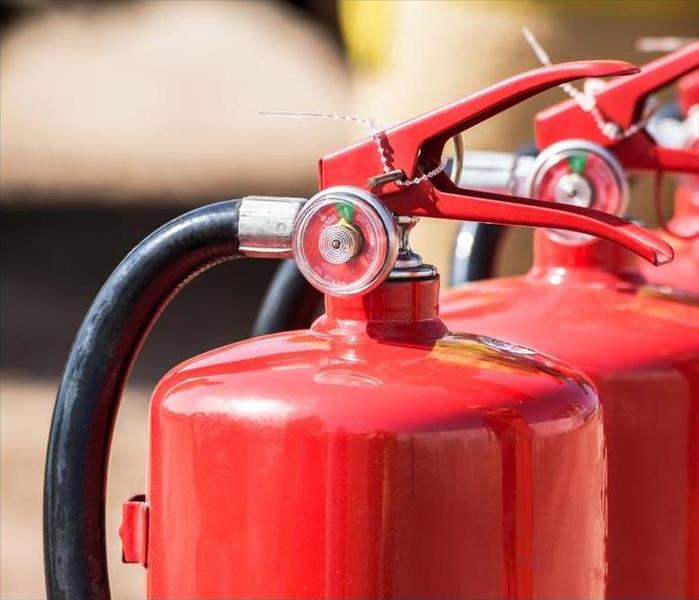Types of Fire Extinguishers and Their Uses
6/14/2019 (Permalink)
 For the safety of your home and family, it’s crucial to have the correct fire extinguisher on hand for the most common fire hazards.
For the safety of your home and family, it’s crucial to have the correct fire extinguisher on hand for the most common fire hazards.
Many people are unaware that there are different kinds of fire extinguishers for home use in Knoxville, TN. Different kinds are designed to fight certain types and sizes of fire. For the safety of your home and family, it’s imperative to have the correct fire extinguisher on hand for the most common fire hazards.
Classes
A home extinguisher will be labeled by class based on the type of fire it is meant to fight.
• Class A varieties are designed for solid objects such as wood, fabric, and paper.
• Class B extinguishers are for fighting flammable liquid fires from sources like gasoline, grease, and oil.
• Class C versions are designed for electrical fires.
Most popular kinds found in home improvement stores will be combination types, labeled to indicate the use. For example, an ABC extinguisher will work on solid material, liquid, and electrical fires.
Sizes
In addition to the class, the size of fire extinguisher is an important factor. As a general rule, the larger the better. The weight listed on the label indicates the amount of fire retardant in the canister. Add a few more pounds to account for the canister’s weight. Consider an extinguisher that is not too heavy to be easily lifted and maneuvered.
Coverage
There are often numbers found before the letters on the label. The number signifies extinguishing power. Each number found before an A is equivalent to 1 ¼ gallons of water. For example, an extinguisher classified as 3-A is equipped with the equivalent of 3 ¾ gallons of water.
A number found before B and C equates to coverage in square feet. A 40-B:C classification, for example, indicates the ability to put out a fire of up to 40 square feet.
Fire preparedness is essential in minimizing home fire damage should a blaze start. With so many options available when purchasing an extinguisher, it is helpful to know how to interpret the information found on the label. Having an understanding of classes, sizes and fire-fighting power will help you choose the appropriate fire extinguisher to protect your home, family, and property.






 24/7 Emergency Service
24/7 Emergency Service